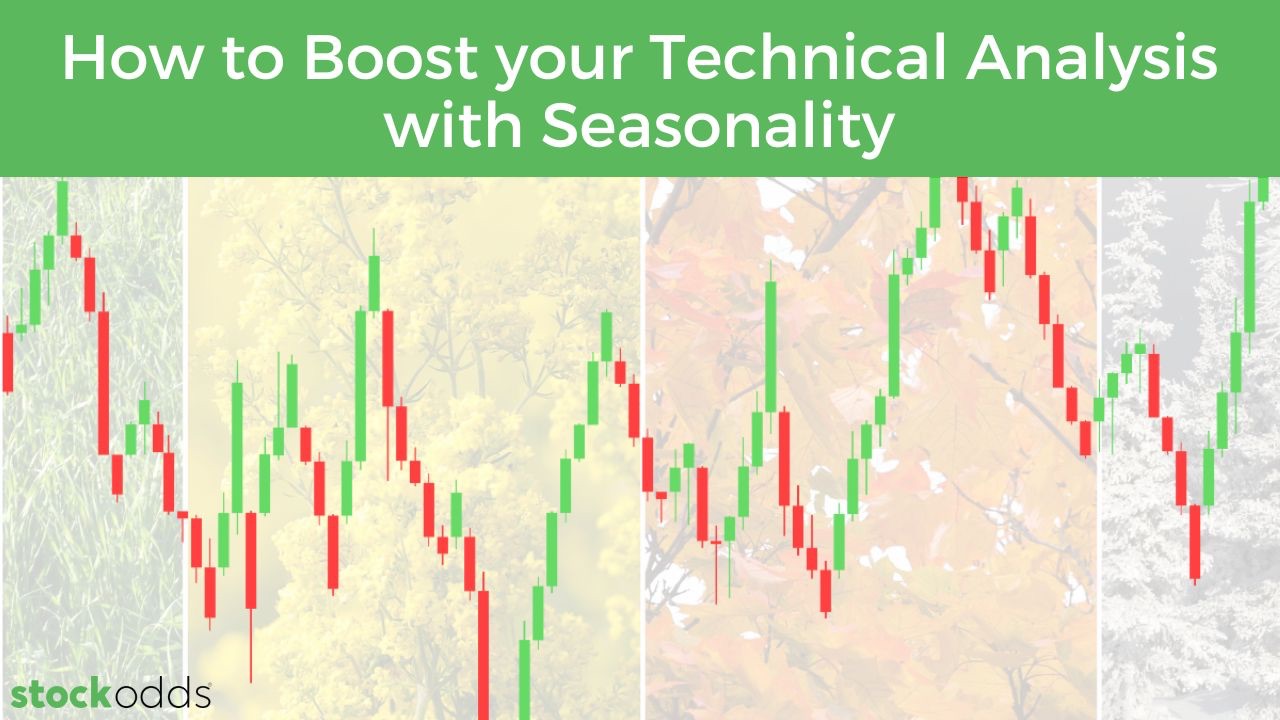How to Boost your Technical Analysis with Seasonality
Apr 10, 2023
Just like the weather follows certain patterns as the seasons change, so do stocks — you need to know how to look for them. This idea that predictable price changes occur every day, week, month, year, and so on is the heart and definition of seasonality. It can be a valuable tool for a trader to know when to focus on a specific security and then define an entry or exit range or price using technical analysis. In short, combining seasonality trading with your technical analysis trading strategy will give you an edge.
Why does seasonality occur?
The most intuitive way to think about seasonality is within the commodities market. When the weather gets colder, demand for commodities like natural gas for heating increases, driving prices higher. This also applies to agriculture in a similar supply-and-demand scenario.
However, these patterns also occur over time in other markets, such as with individual equities and their associated indices, as well as bonds and currencies. A rule of thumb is that a regular trend or price shift repeated in a one-year cycle is considered seasonal. It just has to be repeated and stable. Three common calendar dates are familiar to most stock traders:
- “The Christmas Rally” at the end of December,
- “The January Effect,” where prices rise at the start of the year, and,
- “Sell in May and Go Away,” where traders sell off in May and hold off on returning to the market until October.
Besides calendar periods and weather-induced conditions, seasonality patterns can also occur based on economic events, such as company reporting periods.
Wherever you trade, there will be seasonality patterns to spot.
How does seasonality trading work?
Seasonality patterns are the averages from historical data that help traders predict (on a probability basis) what might happen in the future. The calculation is based on either an average performance for a given time period and can display positive or negative results. They can be plotted on charts or set up as a histogram.
Generally, traders will work from a large period (such as 5-10+ years of data) down to the day-to-day. An extended period may show stronger trends, while shorter periods may show patterns that are weaker. It is helpful to look at a few different time frames to get the whole picture and add value to your trading strategy.
StockOdds Seasonality Almanac displays a bullish indication as Odds of going up being greater than 50%, with a positive value for Average % Change. For opportunities to short a stock, we are looking for Odds of going down to be greater than 50 with negative values for Average % Change. You can also observe the quantity of events that make up the stats. Another great piece of data is the SPY's performance of the same period you are selecting so you can consider "relative performance".
What are the best indicators to use with seasonality charts?
Just because something happened in the past doesn’t guarantee it will occur again in the future. That’s why it’s better to pair a seasonality trading strategy with other indicators. Some indicators to pair with a seasonality pattern strategy are moving averages, stochastic indicators, %BB (position relative to Bollinger Bands) or relative strength index (RSI).
Use a moving average for a slow but more certain signal, stochastic indicators for a faster signal, %BB for a Standard Deviation reference point, and the RSI for signal strength and speed between the two.
Luckily, StockOdds offers all three types of indicators with our dashboards — you can monitor seasonality patterns and indicators in one place.
How can StockOdds help?
Because seasonality patterns exist due to the behavior of humans in the markets they repeat. These patterns can be created from when humans get paid (from their employers), when they take vacations, how they behave around holidays (before and after) when institutions and funds are active, year end, tax implications, and many cyclical events. StockOdds, displays information about these patterns; the seasonality! You want to give yourself the best Odds of being in the right stocks or sectors at the right time.
Our dashboards have years of historical data to analyze for seasonality patterns. We also offer several different seasonality conditions to help you better determine the patterns over various periods, which can be easily viewed with the Seasonality Almanac.
Finally, our web screener runs the whole gambit of momentum indicators suggested to strengthen your trading entries and exits. When it comes to upping your trading strategy and capitalizing on historical data, there’s no better way than to capitalize on all of the information at your fingertips with StockOdds. Click here to see if you qualify.
Start Trading with Odds
Get access to the Seasonality Almanac Dashboard, as well as 1 basic course, for free!

